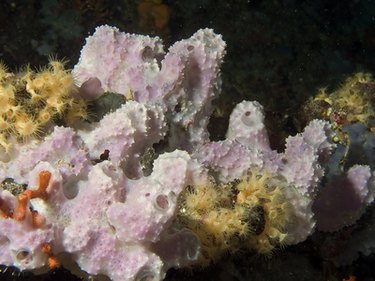
Saltwater aquariums boast some of the most colorful arrays of fish and coral, making them the highest end types of aquariums and the most difficult and expensive to maintain. Sometimes the coral in the aquarium will begin to die, due to it not being properly maintained or for other unknown reasons. It is important to be able to spot the signs of this dying coral so it can try and be saved.
Bleaching
Video of the Day
When coral that isn't usually white becomes incredibly white and looks almost transparent in the water, this is a sign that it is dying or has already died. This is often due to stress being put on the coral in some way, like the water temperature changing drastically or a difference of the pH or enzymes in the aquarium water itself, which causes the coral to begin to die due to lack of nutrients. Too much sunlight or the addition of some sort of chemical in the fish food or in the water itself is also responsible for this in saltwater aquariums.
Video of the Day
Overgrown by Seaweed
If it is a large saltwater tank and there are seaweeds or plants of any kind in the tank, they should not be growing on the coral. If they are this means the coral may be dying, as the saltwater plant is able to live off of them when they otherwise wouldn't with healthy coral. By the time this has occurred the coral is usually already dead. If there is evidence of algae or small amounts of plant life taking root on the coral, then there might be a chance to save it by changing the pH of the water and adding more salt, though this may affect other things that are living in the tank.
Discoloration and Sediment
Coral can become diseased like any other living thing and this will change the color of it, creating dark spots or blotches based upon what type of disease it has. These dark areas can crumble into sediment and spread to other pieces of coral. Many of these diseases are bacterial, causing sections of the coral to die, killing the small organisms that live inside of it. There are ways to cure the coral of these bacteria if you can figure out exactly what it is, but this may affect other life in the saltwater aquarium. Usually the best plan of action is just to remove the diseased piece of coral and then replace it after a few days with a healthy piece.